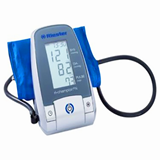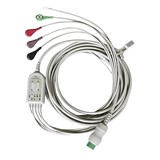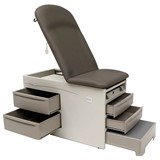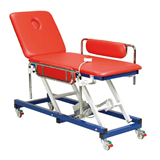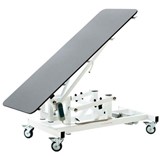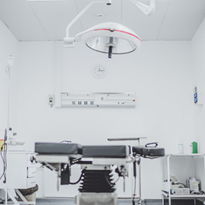A. Importance of Sustainability in Healthcare
In today's world, sustainability has become a critical aspect of various industries, including healthcare. As the healthcare sector continues to grow, it is essential to address the environmental impact of medical practices and equipment. Sustainable and eco-friendly designs in examination tables offer a compelling solution to reduce the industry's ecological footprint while maintaining high-quality patient care.
The importance of sustainability in healthcare lies in its potential to mitigate adverse effects on the environment and promote long-term ecological balance. By adopting eco-conscious practices, healthcare facilities can contribute to a healthier planet for future generations. Examination tables, being essential pieces of medical equipment used extensively, play a significant role in the overall sustainability efforts of healthcare institutions.
B. Eco-Friendly Materials and Manufacturing Processes
Developing eco-friendly examination tables involves careful selection of materials and environmentally conscious manufacturing processes. Manufacturers are now utilizing recycled or renewable materials in the construction of examination tables. These materials not only reduce the demand for new resources but also decrease the amount of waste generated by medical equipment.
Additionally, advanced manufacturing techniques aim to minimize energy consumption and emissions during production. By incorporating sustainable practices in the manufacturing process, the overall carbon footprint of examination tables can be significantly reduced.
C. Balancing Sustainability with Functionality and Cost
While sustainability is a crucial consideration, it should not compromise the functionality and usability of examination tables. Healthcare professionals rely heavily on these tables for patient assessments and treatments. Therefore, it is essential to strike a balance between sustainability and functionality.
Designers and manufacturers must ensure that eco-friendly examination tables meet the same performance standards as conventional ones. This includes considerations for patient comfort, ergonomic features, and durability. Additionally, the cost-effectiveness of sustainable examination tables is a critical factor in their widespread adoption by healthcare facilities.
Encouraging Adoption of Green Practices in Healthcare Facilities
To drive the adoption of sustainable and eco-friendly examination tables, it is necessary to create awareness and encourage green practices in healthcare facilities. Decision-makers and administrators play a vital role in initiating and implementing environmentally responsible strategies.
Promoting the benefits of sustainable examination tables, such as reduced environmental impact and potential cost savings over the long term, can incentivize healthcare facilities to make the switch. Collaboration with manufacturers and suppliers can also lead to the development of customized solutions that meet the unique needs of different healthcare settings.
Collaborative Technologies and Multi-Functional Examination Tables
A. Collaborative Tools for Healthcare Teams
In modern healthcare settings, effective collaboration among healthcare teams is paramount to providing comprehensive patient care. Collaborative technologies integrated into examination tables play a pivotal role in facilitating seamless communication and cooperation among medical professionals. These technologies encompass various features that streamline information sharing and decision-making, ensuring a holistic approach to patient management.
One of the key collaborative tools is the integration of Electronic Health Records (EHR) directly into the examination table interface. This allows physicians, nurses, and other healthcare providers to access patients' medical histories, test results, and treatment plans instantly during examinations. With this real-time information at their fingertips, healthcare teams can make well-informed decisions and provide personalized care.
Additionally, video conferencing capabilities are becoming increasingly prevalent in multi-functional examination tables. Through secure and HIPAA-compliant channels, healthcare teams can conduct virtual consultations with specialists, enabling them to seek expert opinions and discuss complex cases without the need for physical presence. This feature proves particularly beneficial in remote or rural areas where access to specialized healthcare may be limited.
B. Multi-Functional Examination Table Feature
Modern examination tables are no longer limited to basic examination functionalities. They have evolved into versatile multi-functional platforms that cater to a wide array of medical procedures and specialties. These features enhance the overall utility of the examination table and contribute to the optimization of healthcare facilities.
Some multi-functional examination tables offer adjustable positions and configurations, accommodating various examination needs and procedures. From standard physical examinations to gynecological examinations and minor surgical procedures, these tables provide flexibility and adaptability, reducing the need for multiple specialized equipment.
Furthermore, specialized attachments and accessories can be easily integrated into these tables, catering to specific medical requirements. For instance, orthopedic attachments for joint assessments, ophthalmic extensions for eye examinations, and dermatology-focused components for skin evaluations. This modular approach not only enhances the examination experience but also optimizes the use of limited clinical space.
C. Enhancing Workflow and Efficiency
Collaborative technologies and multi-functional features in examination tables contribute significantly to workflow efficiency in healthcare facilities. By streamlining communication and providing access to necessary information during patient encounters, these tables minimize delays and facilitate swift decision-making.
The seamless integration of EHR systems ensures that healthcare teams can update patient records promptly, reducing the risk of errors and miscommunication. Moreover, the availability of teleconferencing capabilities eliminates the need for back-and-forth referrals between healthcare providers, expediting the diagnosis and treatment process.
In busy clinical environments, time efficiency is crucial. Multi-functional examination tables with pre-programmable settings enable healthcare providers to transition swiftly between different examination modes. This time-saving aspect not only improves patient throughput but also reduces the burden on medical staff, allowing them to focus more on patient care.
D. Considering Space Constraints and Practicality
While collaborative technologies and multi-functional features offer significant advantages, it is essential to consider space constraints and practicality when selecting examination tables for healthcare facilities. Larger, complex examination tables may not be suitable for smaller clinics or tight examination rooms.
In conclusion, the integration of sustainable and eco-friendly designs into examination tables signifies a progressive step towards a greener healthcare industry. Recognizing the importance of sustainability in healthcare, the adoption of eco-conscious materials and manufacturing processes demonstrates a commitment to reducing the environmental impact while maintaining patient care quality. However, a delicate balance between sustainability, functionality, and cost-effectiveness must be struck to ensure that these tables meet the high standards required for medical equipment.
Moreover, the incorporation of collaborative technologies and multi-functional features into examination tables signifies a transformation in patient care. Enabling healthcare teams to access Electronic Health Records and conduct virtual consultations enhances communication, facilitates informed decision-making, and ensures holistic patient management. The expansion of examination tables into versatile platforms for various medical procedures optimizes workflow efficiency and resource utilization.








-160x160-state_article-rel-cat.png)
